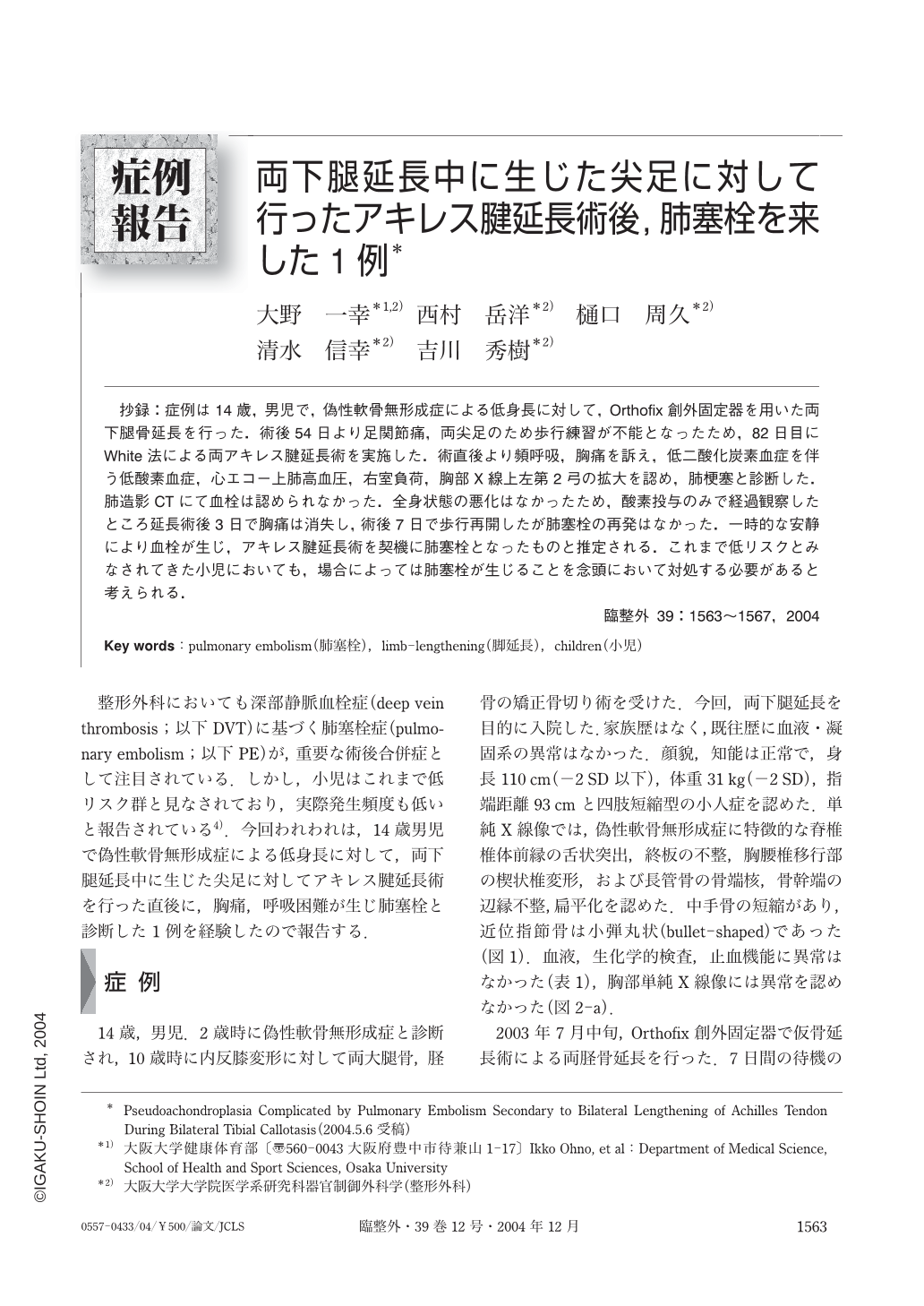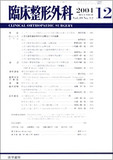Japanese
English
- 有料閲覧
- Abstract 文献概要
- 1ページ目 Look Inside
抄録:症例は14歳,男児で,偽性軟骨無形成症による低身長に対して,Orthofix創外固定器を用いた両下腿骨延長を行った.術後54日より足関節痛,両尖足のため歩行練習が不能となったため,82日目にWhite法による両アキレス腱延長術を実施した.術直後より頻呼吸,胸痛を訴え,低二酸化炭素血症を伴う低酸素血症,心エコー上肺高血圧,右室負荷,胸部X線上左第2弓の拡大を認め,肺梗塞と診断した.肺造影CTにて血栓は認められなかった.全身状態の悪化はなかったため,酸素投与のみで経過観察したところ延長術後3日で胸痛は消失し,術後7日で歩行再開したが肺塞栓の再発はなかった.一時的な安静により血栓が生じ,アキレス腱延長術を契機に肺塞栓となったものと推定される.これまで低リスクとみなされてきた小児においても,場合によっては肺塞栓が生じることを念頭において対処する必要があると考えられる.
A 14-year-old boy diagnosed with pseudoachondroplasia on the basic of characteristic X-ray findings in the vertebral bodies, metaphyses and epiphyses of long bones, and metacarpal bone, underwent bilateral tibial lengthening by callotasis. Bacause his feet were developing severe equinus, bilateral were Achilles tendon lengthening was performed by the White method on postoperative day 82. Immediately after the operation, the patient complained of chest pain and had difficulty breathing, and pulmonary embolism (PE) was diagnosed based on evidence of hypoxemia, pulmonary hypertension, and right ventricular overloading. Oxygen administration via a nasal cannula resulted in resoluation of the patient's symptoms on the third day after their onset. Rehabilitation was resumed on the seventh day, and there was no recurrence of PE. Children can generally be regarded as a low-risk group for PE, but when sudden chest pain occurs after temporary immobilization during bone lengthening, PE should be considered first.

Copyright © 2004, Igaku-Shoin Ltd. All rights reserved.


